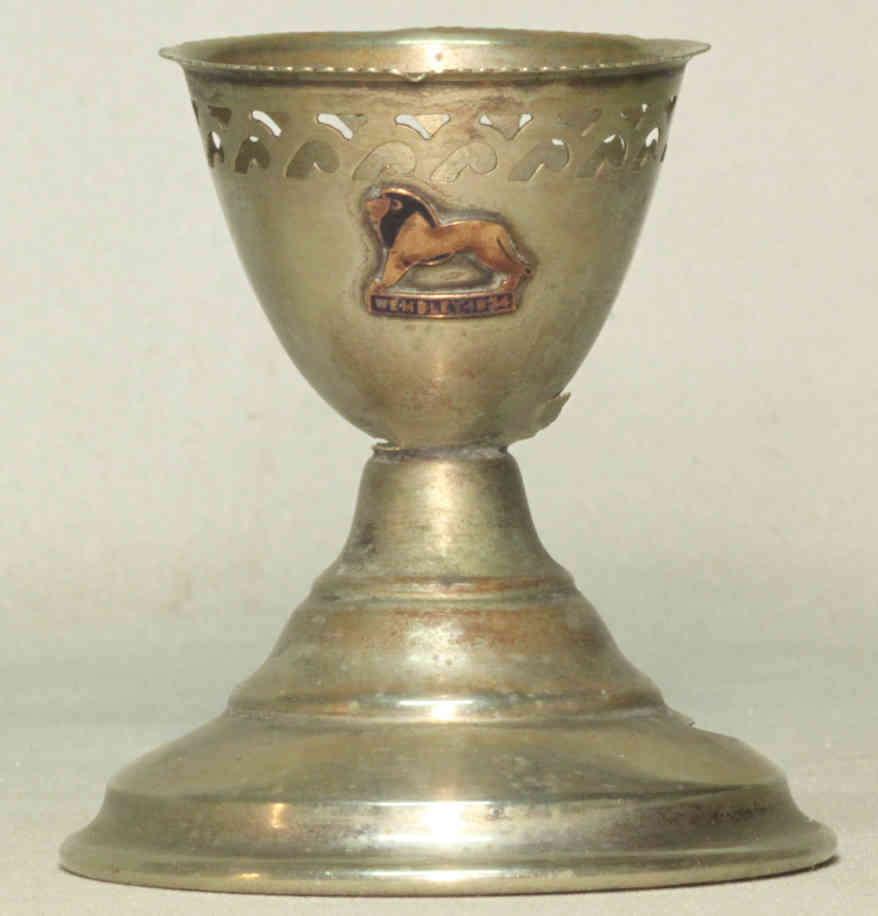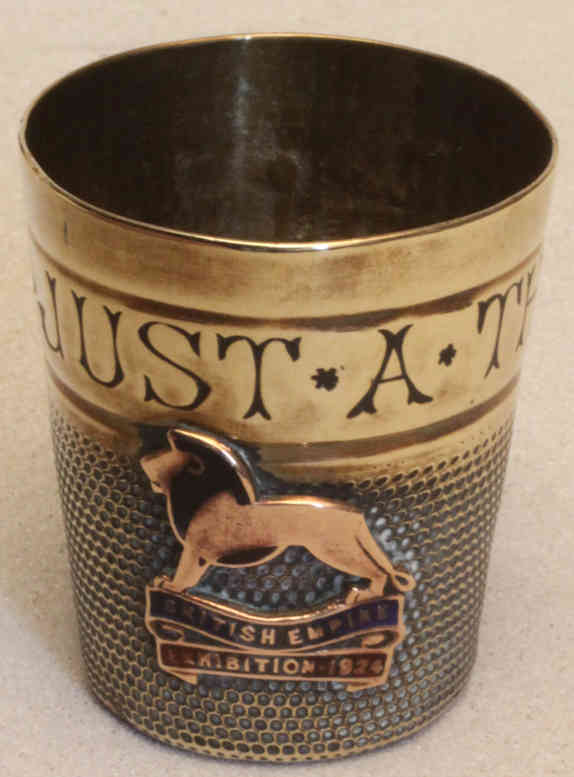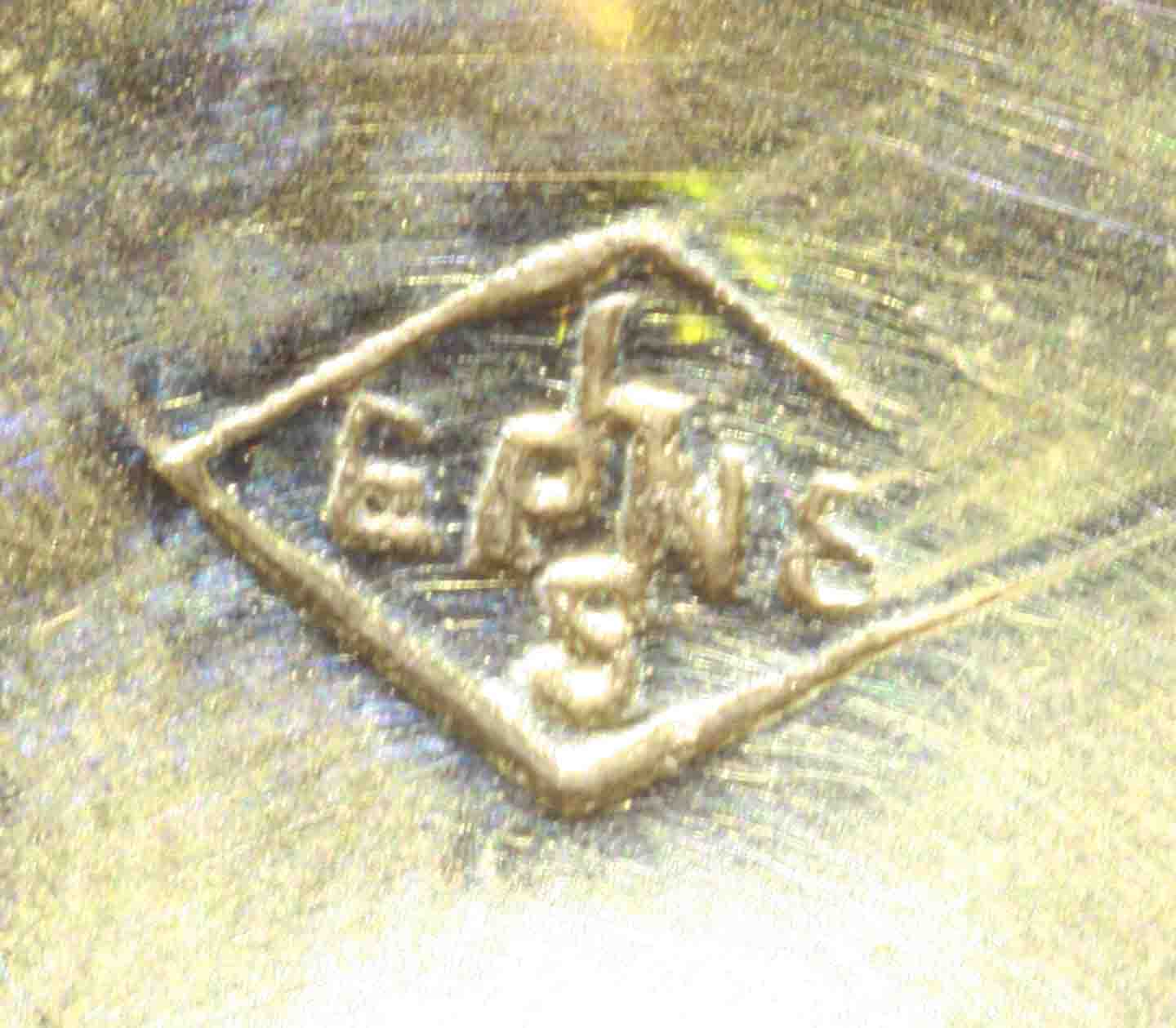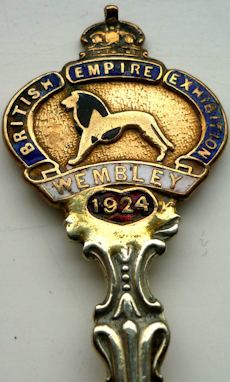British Empire Exhibition Wembley
1924-25 Souvenirs
(c) Antique Metalware Society
Small extracts can be used with acknowledgements to 'Oldcopper.org' website.
Helpful comments are very welcome.
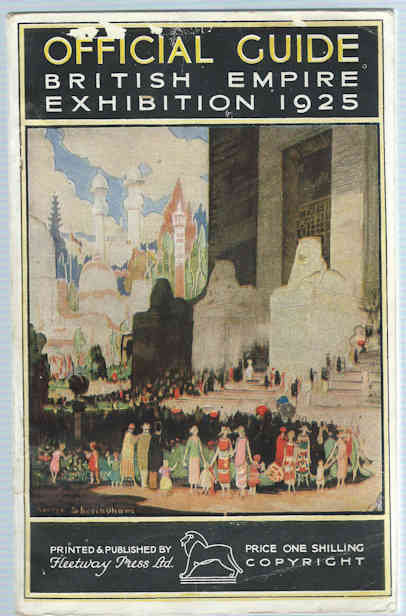 The makers and their products covered in this website are mostly active during the century of development of quality and quantity production between 1850 and 1950. Interestingly, these dates coincide with those of the ‘Great Exhibition’ in London 1851 and the ‘Festival of Britain’ in 1951. Between these is the significant ‘British Empire Exhibition’ of 1924 and 1925.
The makers and their products covered in this website are mostly active during the century of development of quality and quantity production between 1850 and 1950. Interestingly, these dates coincide with those of the ‘Great Exhibition’ in London 1851 and the ‘Festival of Britain’ in 1951. Between these is the significant ‘British Empire Exhibition’ of 1924 and 1925.
Here are a few of the souvenirs that were made in brass, nickel silver and electroplated nickel silver.
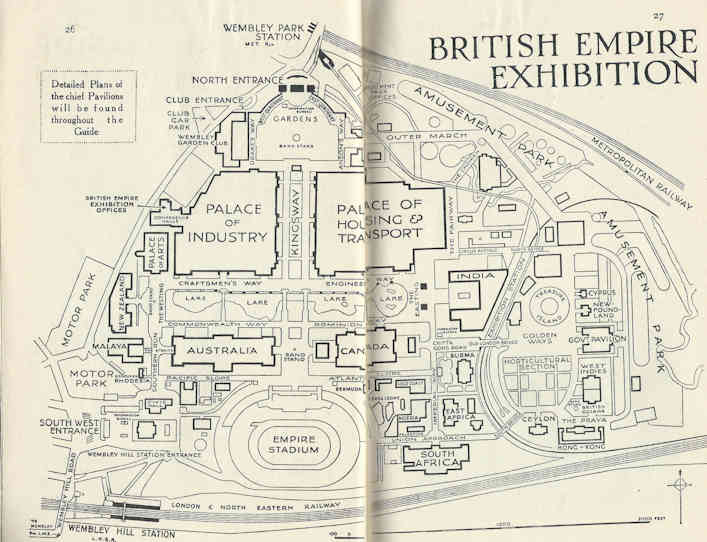
The map above is copied from the catalogue for the 1925 year.
In 1919 the Prince of Wales became President of the organising committee for an exhibition to show off the industry and natural resources of the British Empire, and ‘... to enable all who owe allegiance to the British flag to meet on common ground and learn to know each other.’ It was erected on a 216 acre (87 Hectare) site of former pleasure grounds at Wembley Park, within easy reach of Central London. The main buildings were the Palaces of Industry, Engineering and Arts together with the Wembley Stadium. There were many pavilions designed and erected by each of the participating countries, an amusement park and ingenious transport arrangements into and round the site. The thousands of visitors could take away many leaflets and buy special souvenirs.
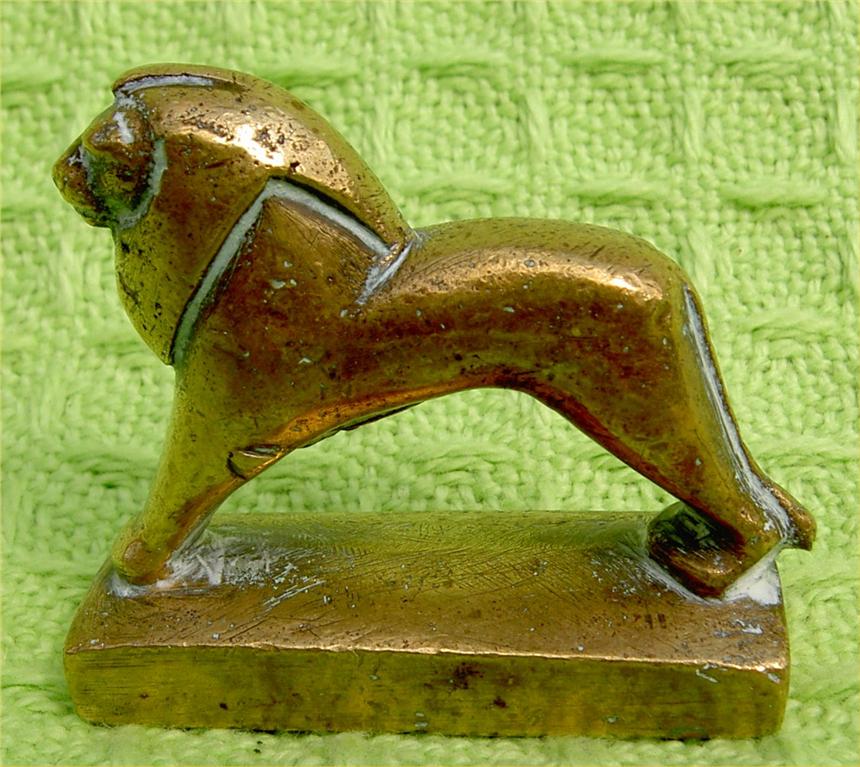
The promotional symbol for the exhibition was an art deco version of a statant (standing) lion, a very suitable icon perhaps inspired by the heraldic rampant lion used in many relevant coats of arms. The emblems applied to the souvenirs are very varied. Makers are mostly not identified.
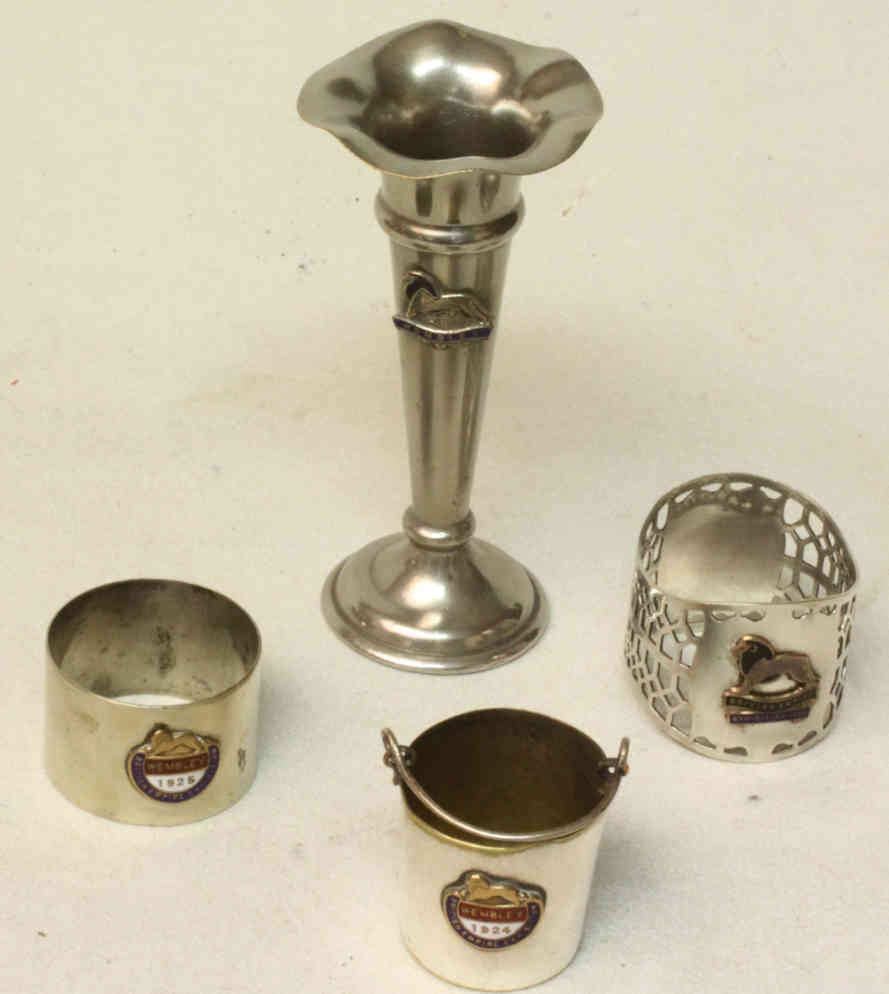 |
Specimen flower vase, two serviette rings and a miniature bucket. |
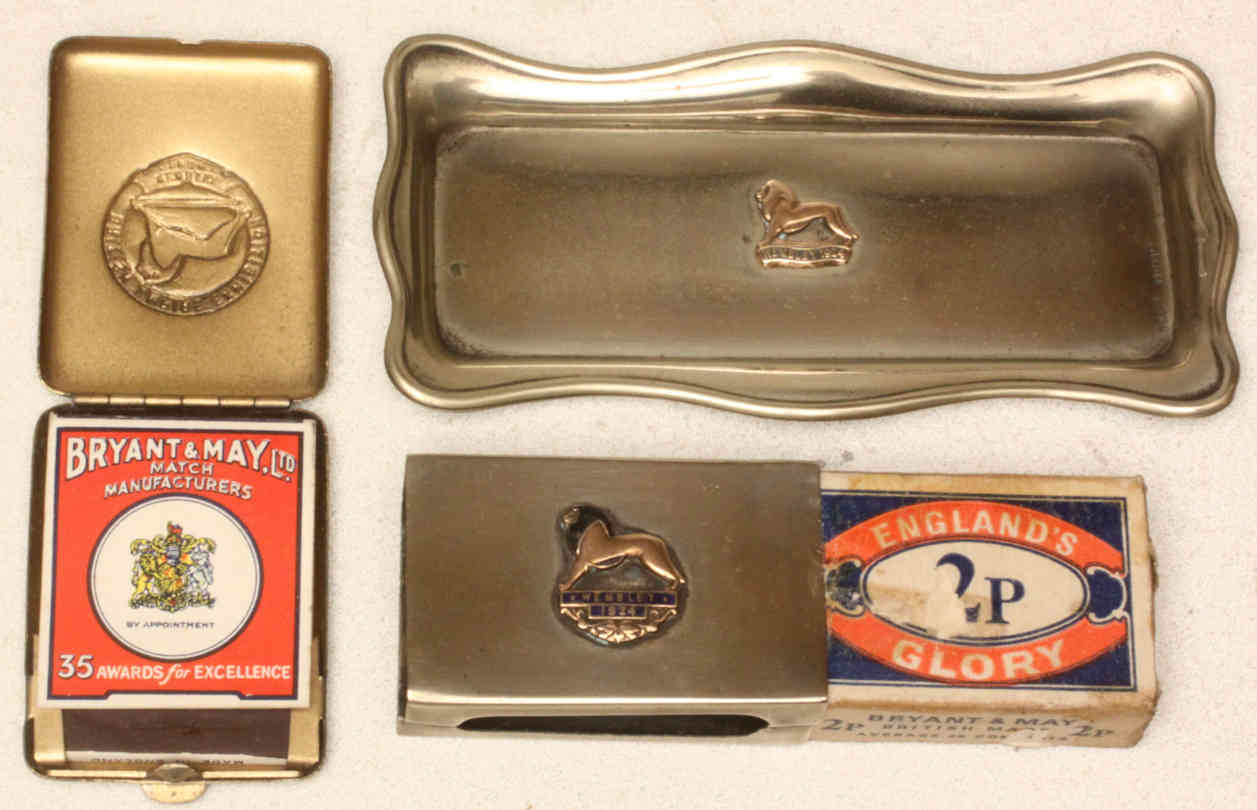 |
A card tray and two types of match box holders. |
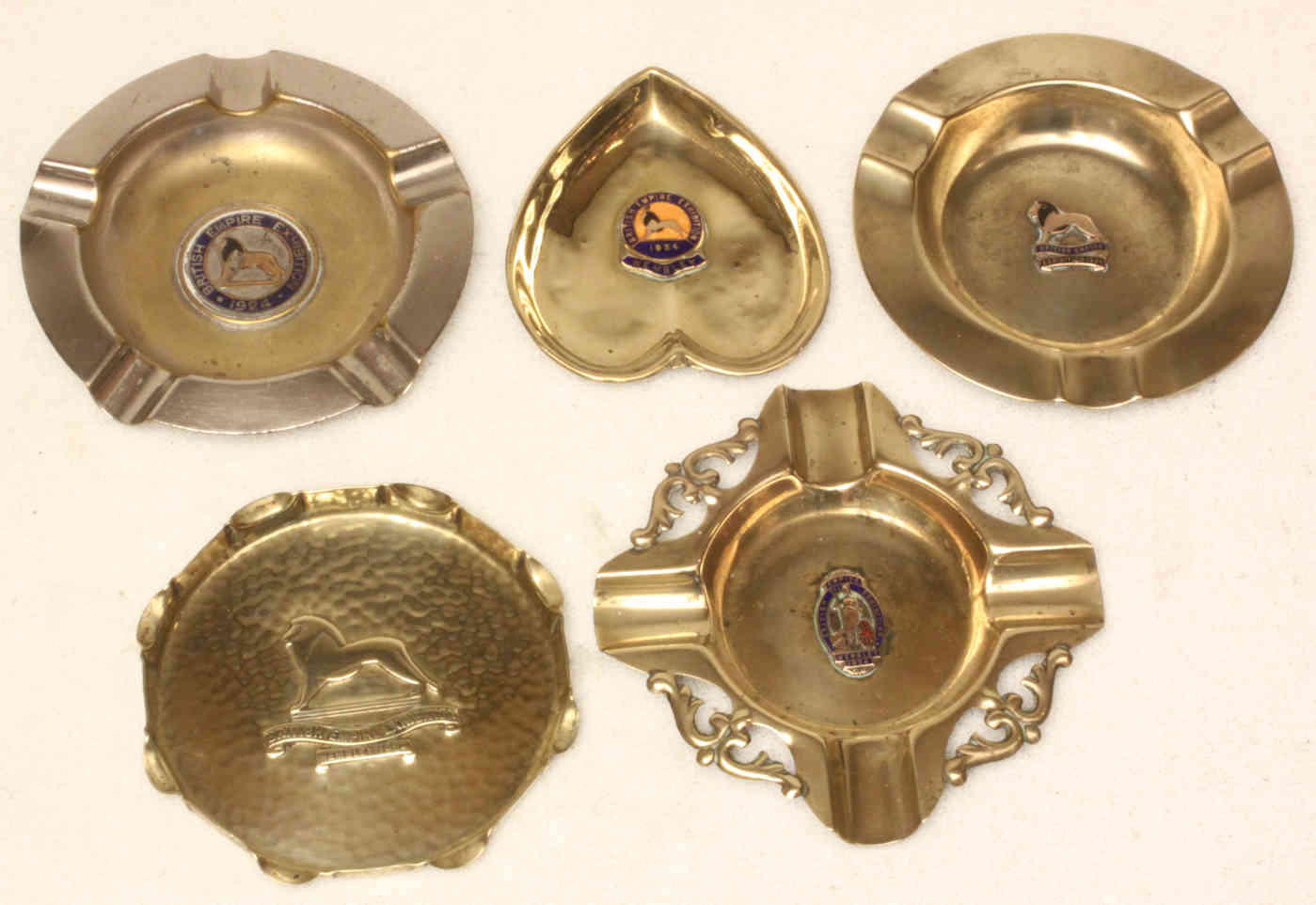 |
Five souvenir ash trays. |
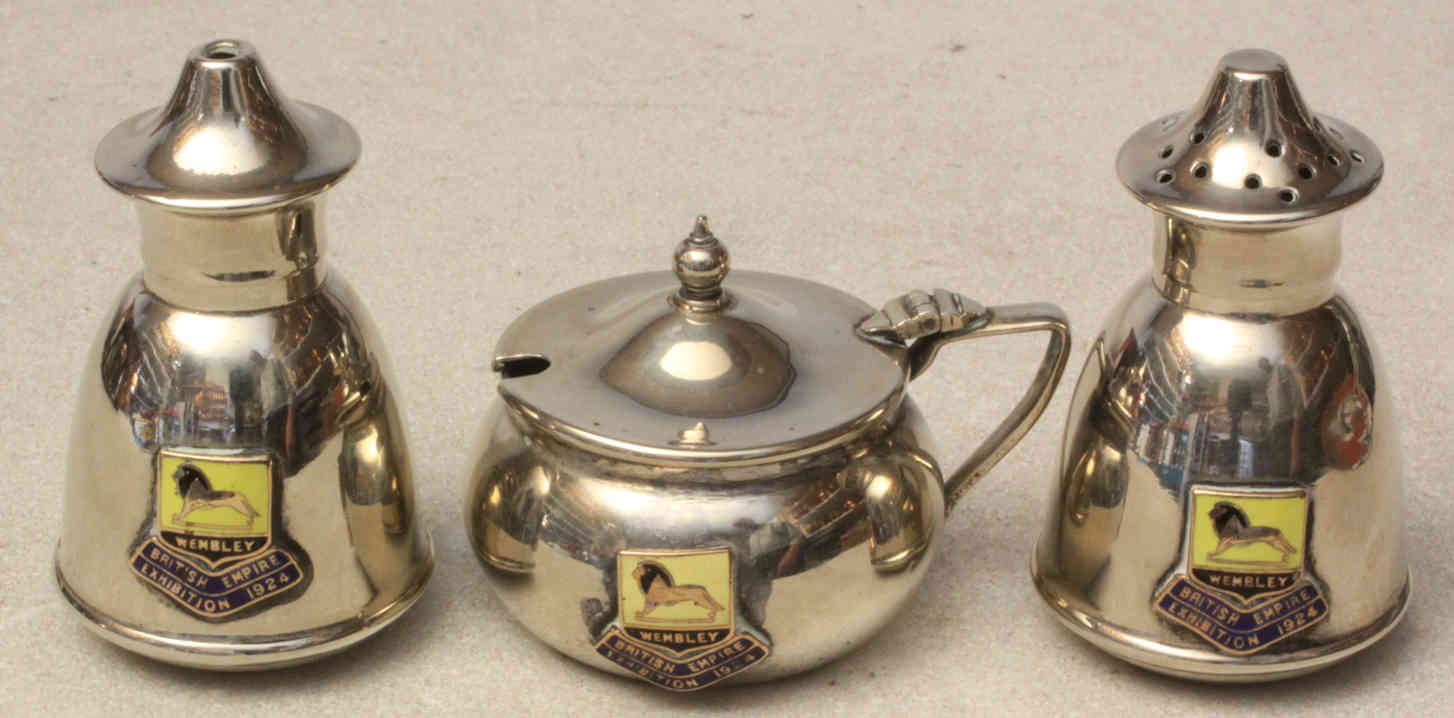 |
Excellent cruet set. |
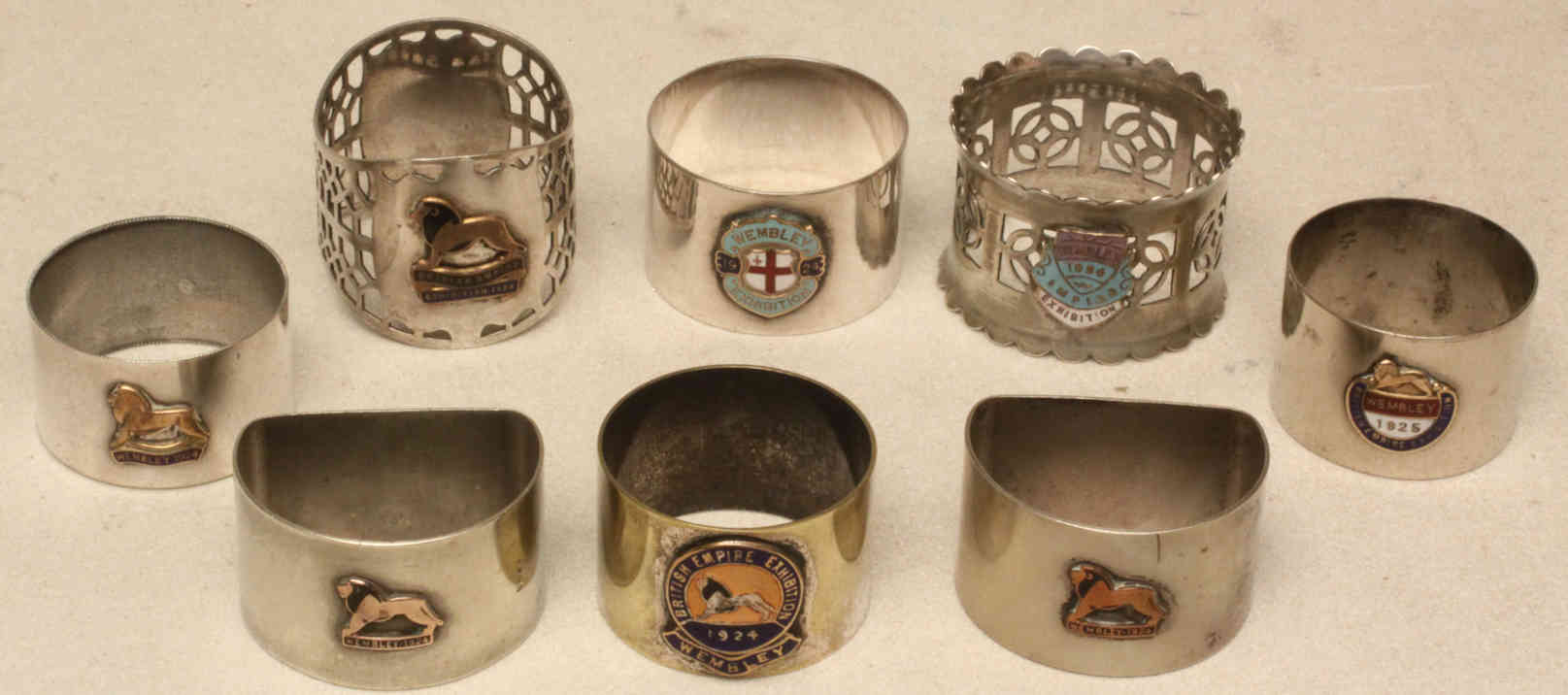 |
Seven varieties of serviette (napkin) rings with a variety of versions of the logo. |
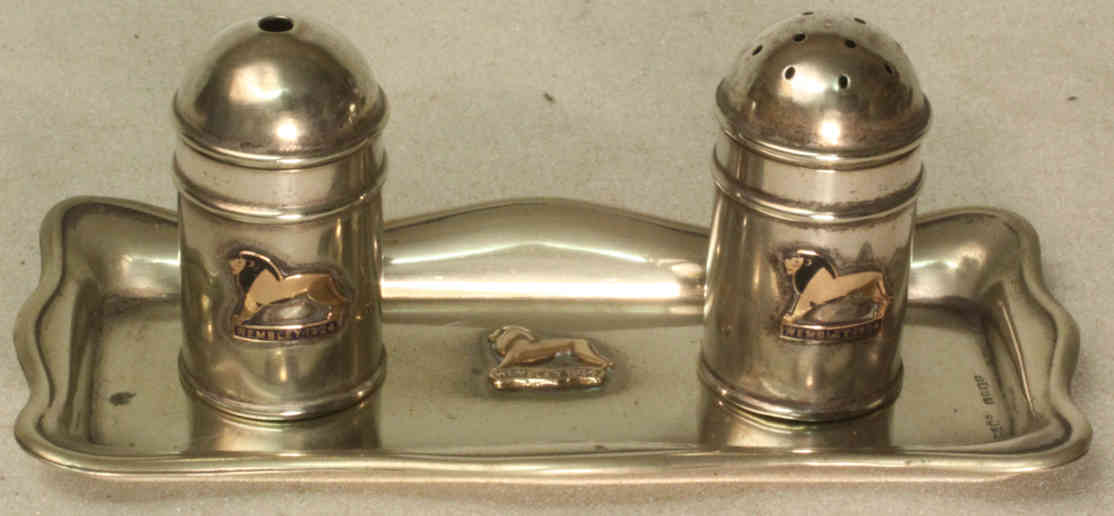 |
Another cruet set, |
|
|
An EPNS (Electroplated nickel silver) egg cup now showing signs of use. |
|
|
'Just a thimble full' large measure for spirits with the logo added. |
 |
Butter and Cheese knife from the New Zealand pavillion. |
 |
A similar item from theAustralian pavillion. |
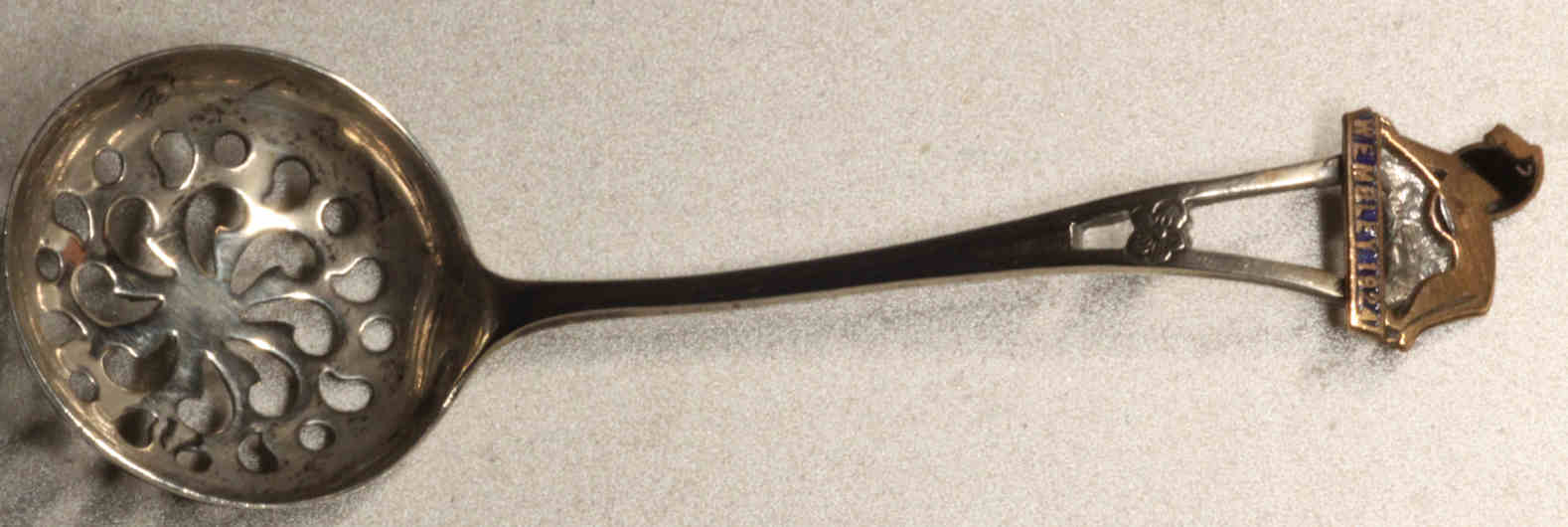 |
A useful 'S' shaped sugar sifting spoon. |
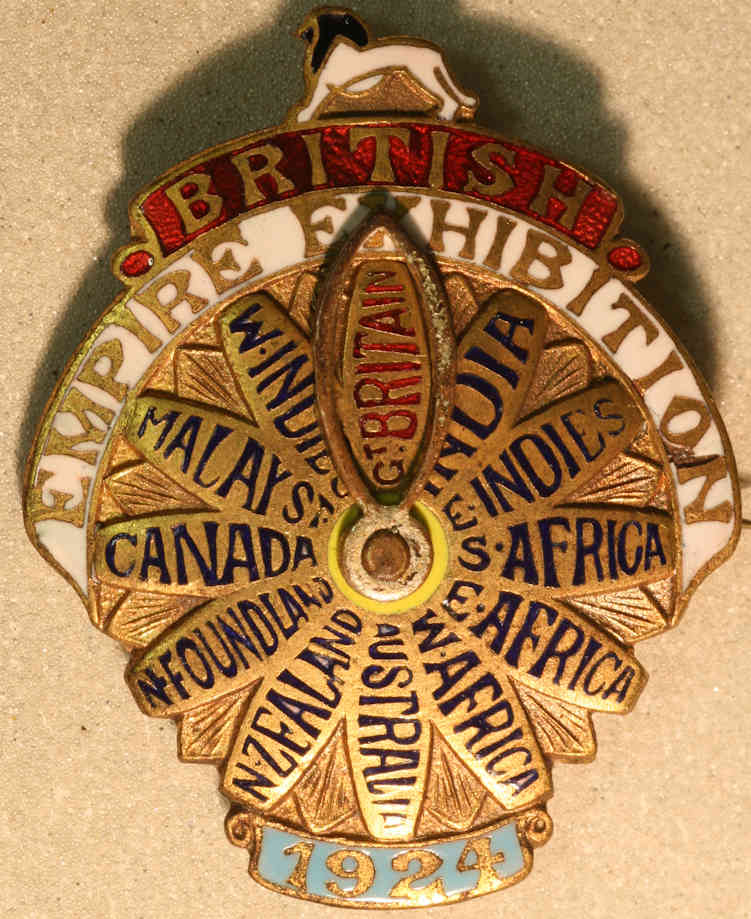 |
A Commonwealth lapel badge. |
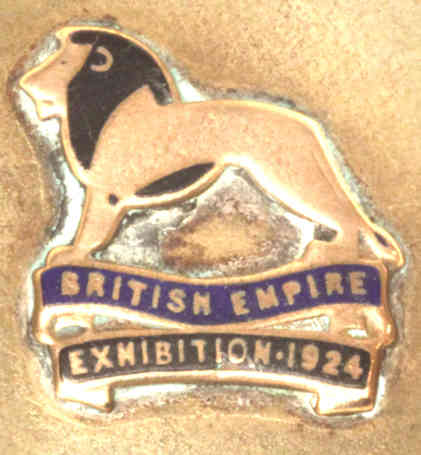 |
Close views of the variety of emblems. |
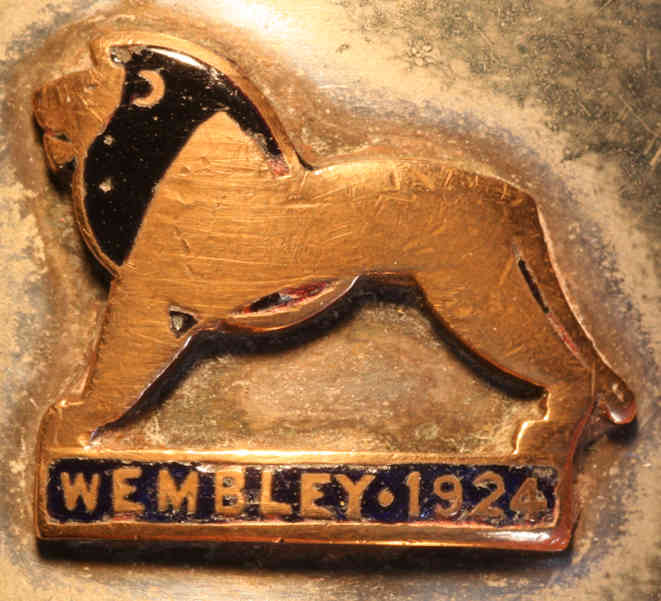 |
|
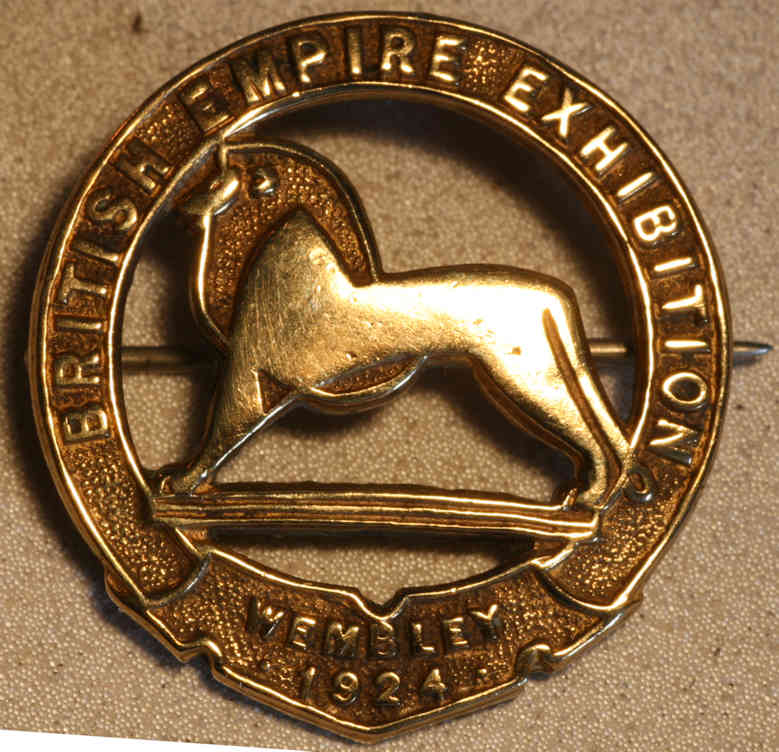 |
A pin badge. |
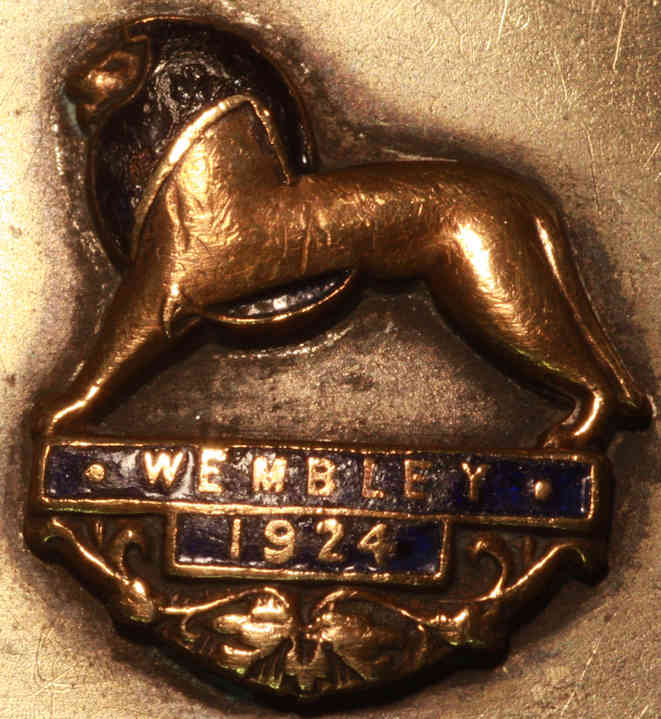 |
|
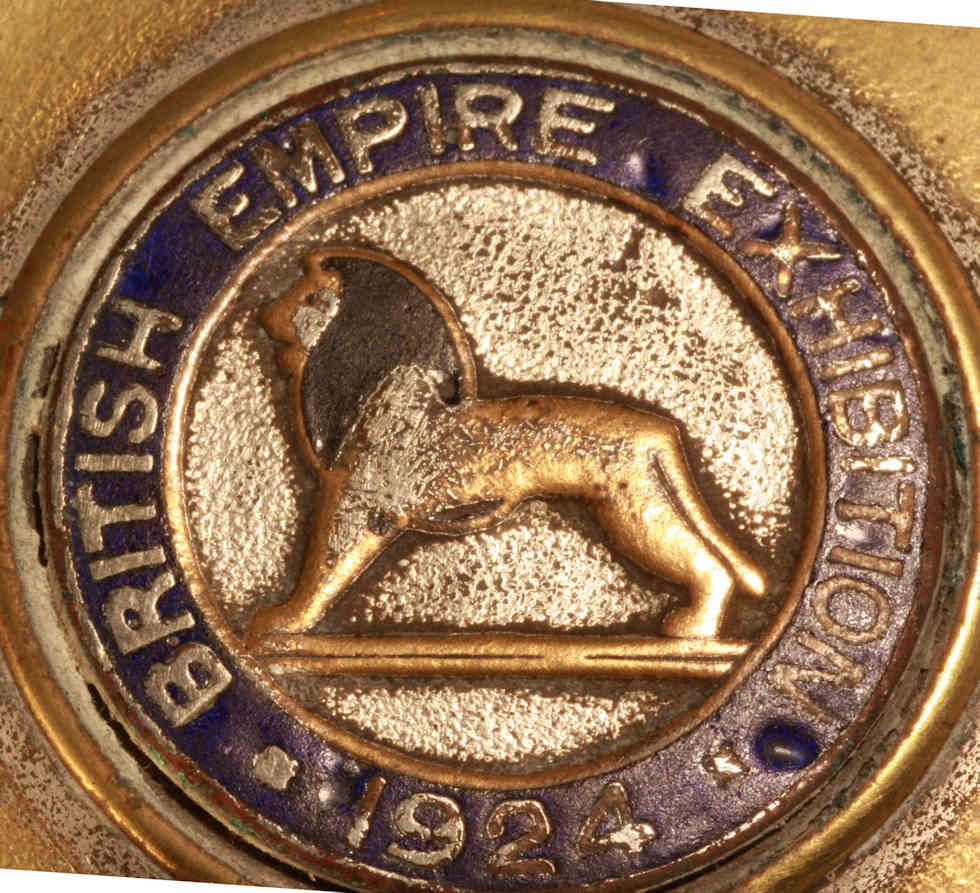 |
|
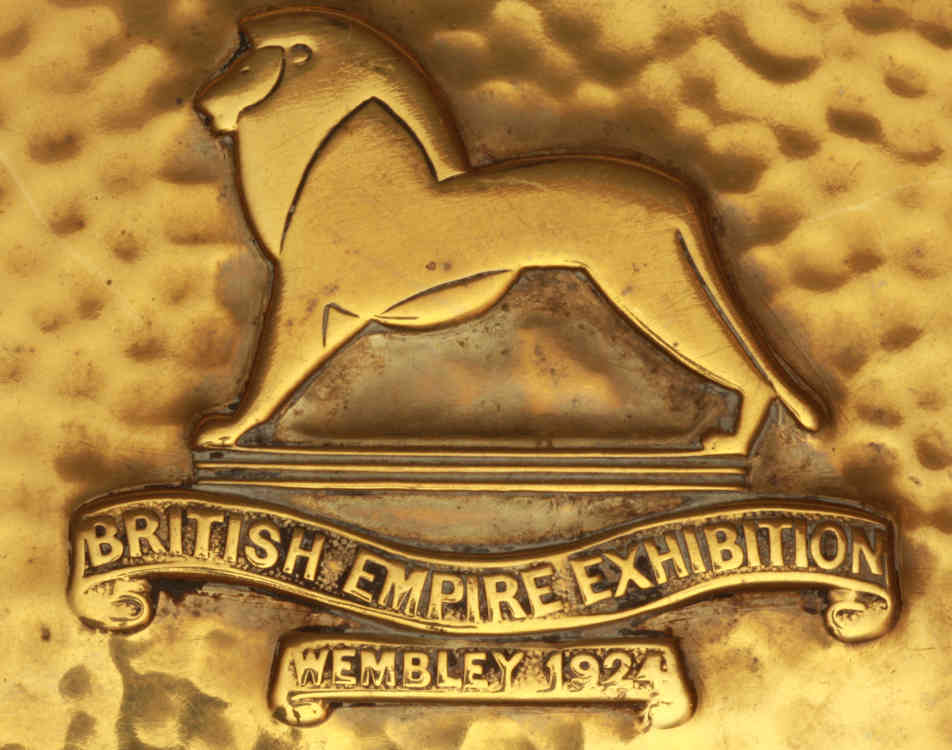 |
An emblem on a brass tray. |
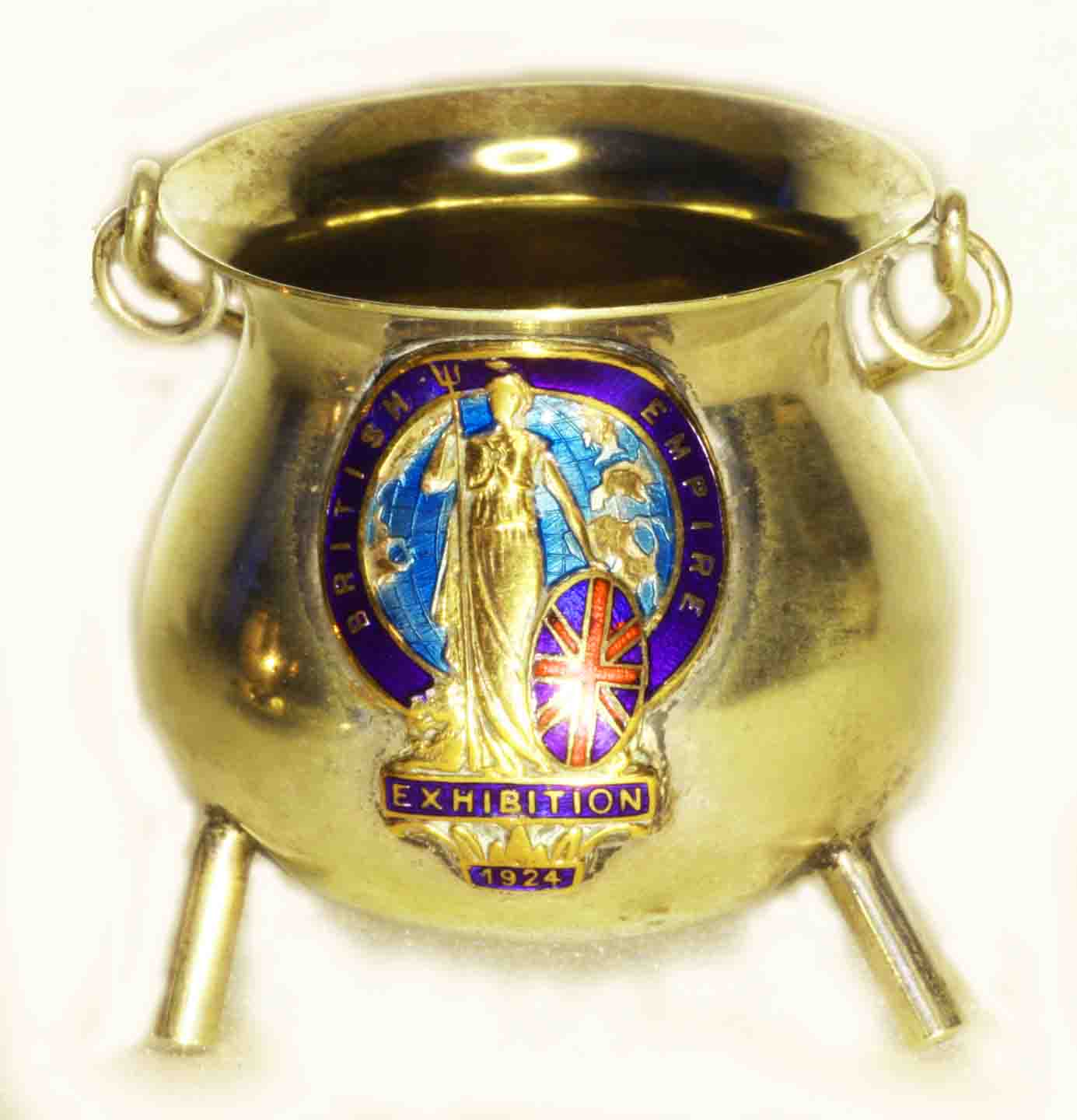 |
A miniature cauldron with an emblem including Britannia. |
|
|
This is the only maker's mark found, having the initials 'LS' above and below the EPNS for electroplated nickel silver. |
 w.jpg) |
|
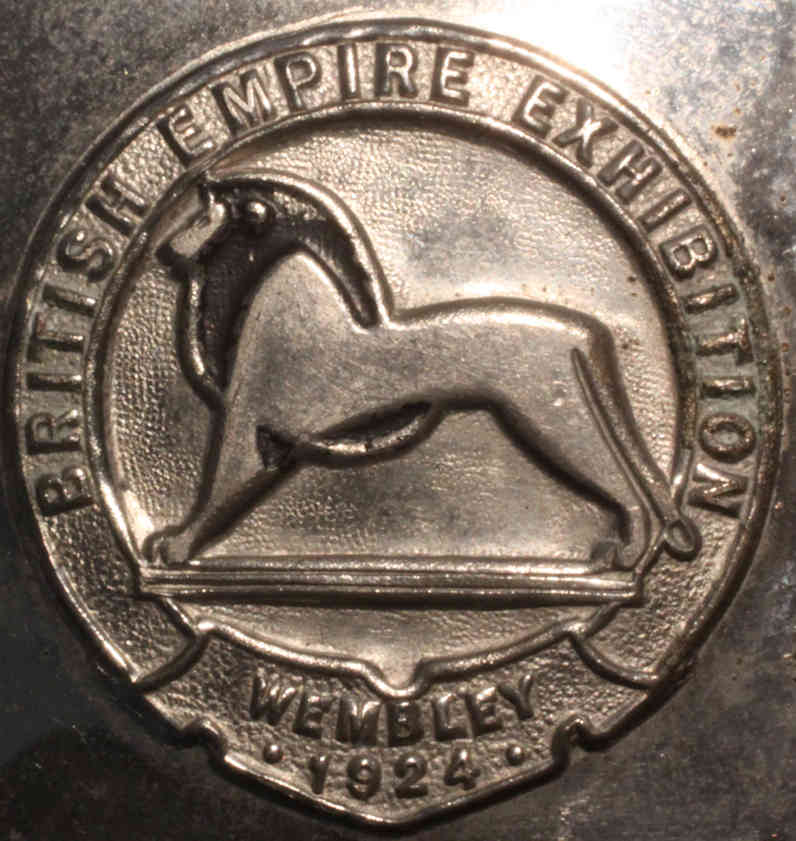 |
|
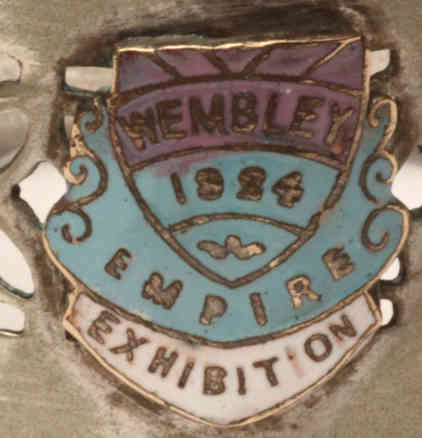 |
|
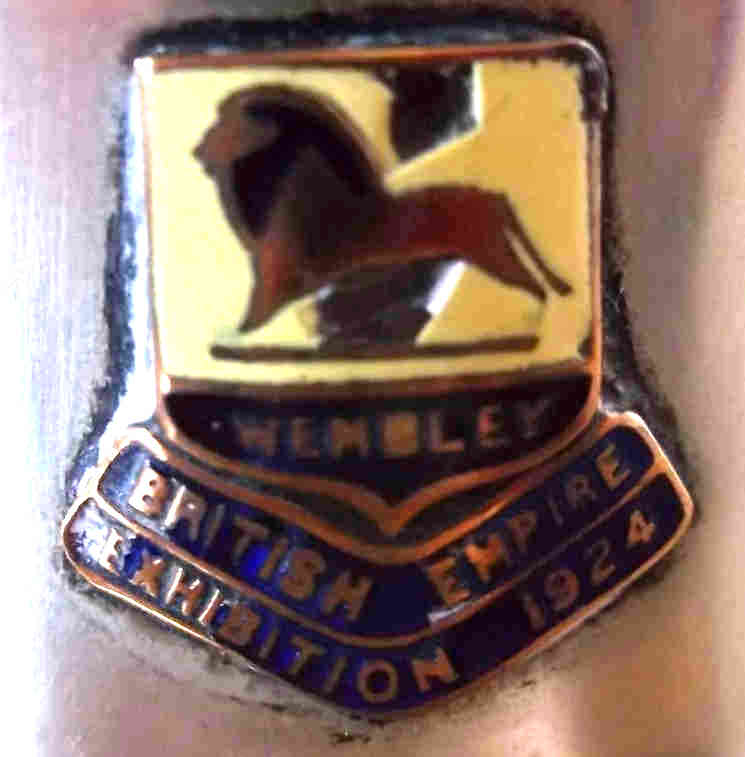 |
|
|
|
A crowned emblem on a souvenir spoon. |
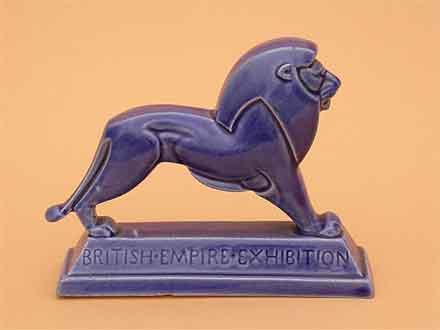 |
The emblem as seen by the artist F C Herrick for use in a pottery souvenir from Ashtead Potters Ltd. |
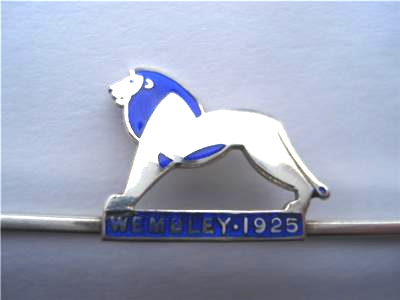 |
A souvenir bar pin brooch made in silver by the jeweller Charles Horner. (Ack 'themintedone') |
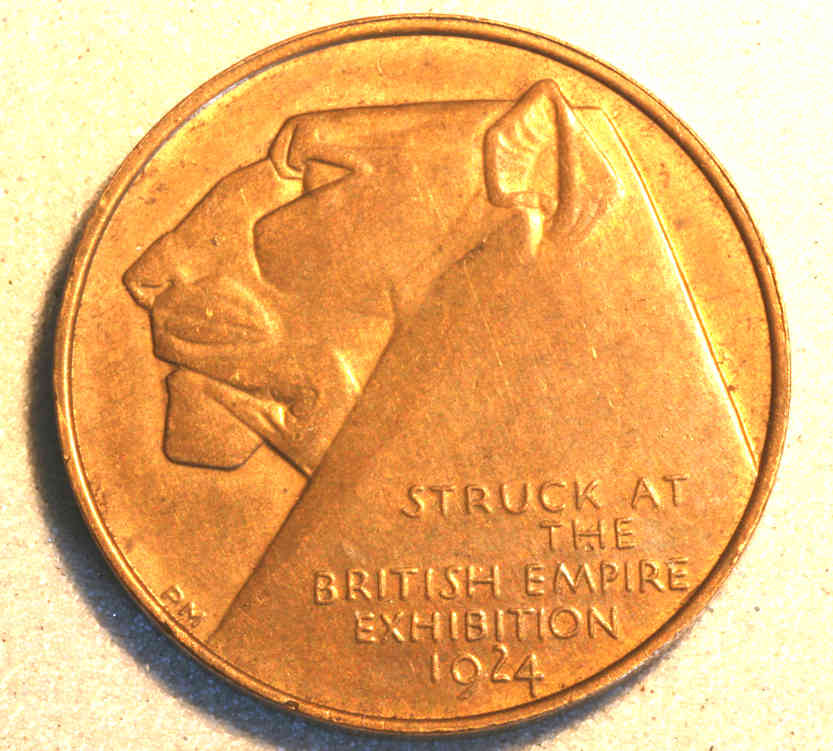 |
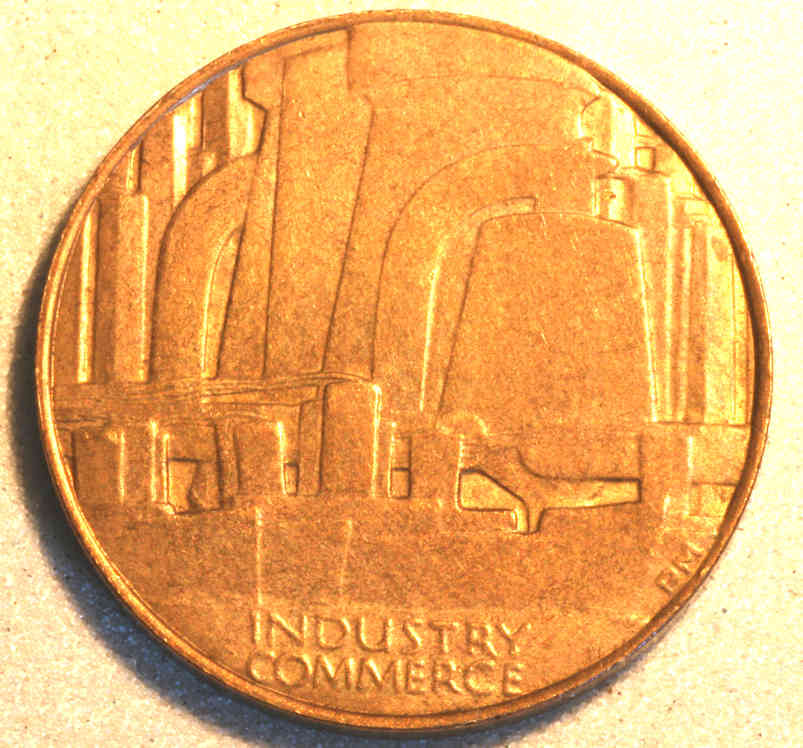 |
| A commemorative 27.5mm diameter bronze medallion designed by Percy Metcalfe and struck at the exhibition. | |
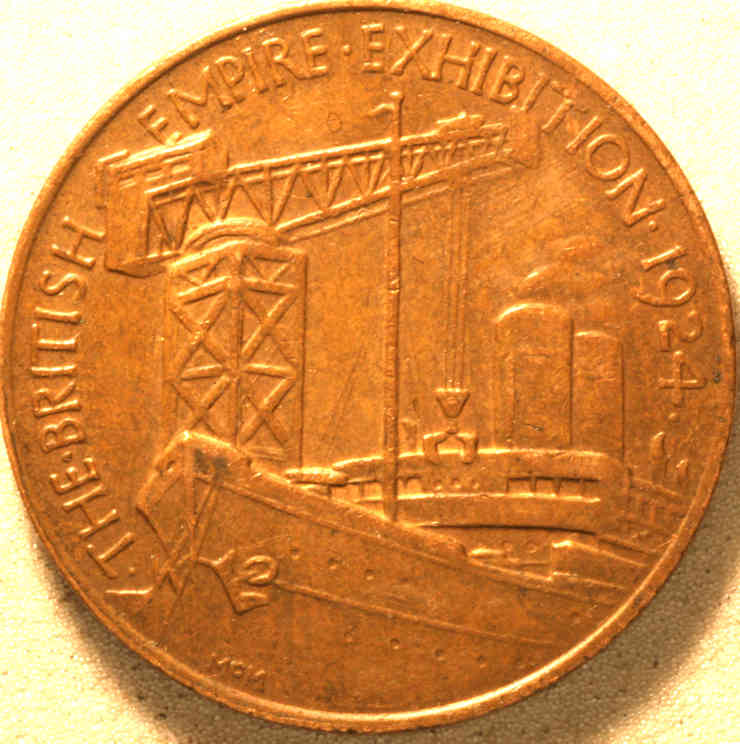 |
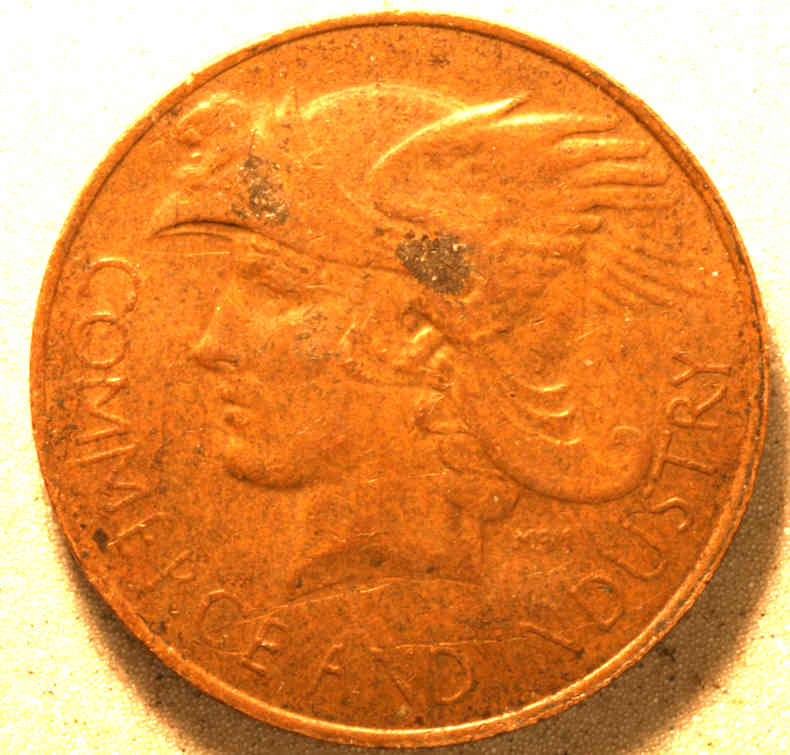 |
| Another commemorative keepsake medallion demonstrating commerce and industry with a Clydebank cantilever crane above a cargo ship. They were struck on the Royal Mint stand and sold for six pence each. This medal was also the runner-up in the competition for a commemorative piece for the exhibition. | |
 |
 w.jpg) |
| A hanging medallion 25mm diameter. |
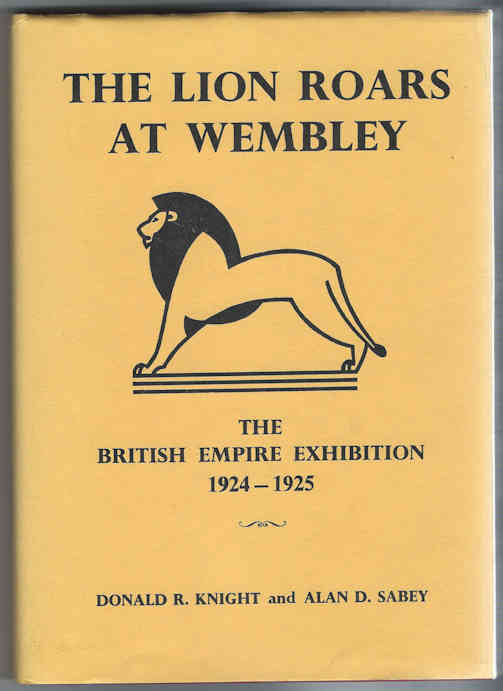
' The Lion Roars At Wembley ', Donald R Knight and Alan D Sabey. ISBN 0 9509251 1984, 255pp. A Reference Book Covering The 1924 and 1925 Exhibitions. There is a good description of the site, the organisation, arrangements, and exhibitors for the 1924 and 1925 exhibitions. For the associated ephemera there is excellent treatment of the varieties of commemorative stamps and postal stationery. Coverage of medallions, and metallic and ceramic souvenirs is minimal.
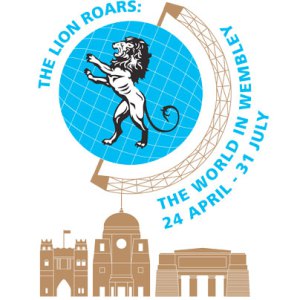
There was an exhibition near the old site at the Brent Civic Centre in 2014. It explored the legacy of what would have been seen by the 27 million visitors during 1924 and 1925 using exhibits held by their museum.
After
